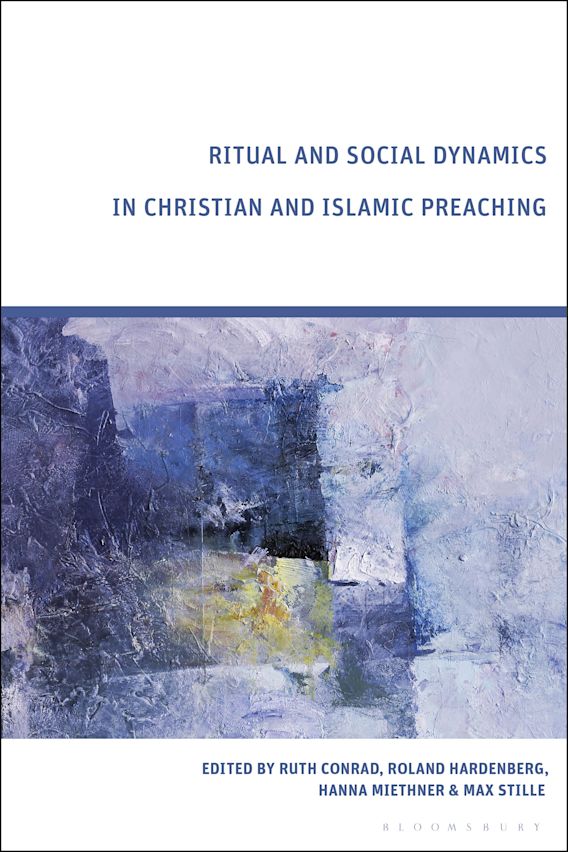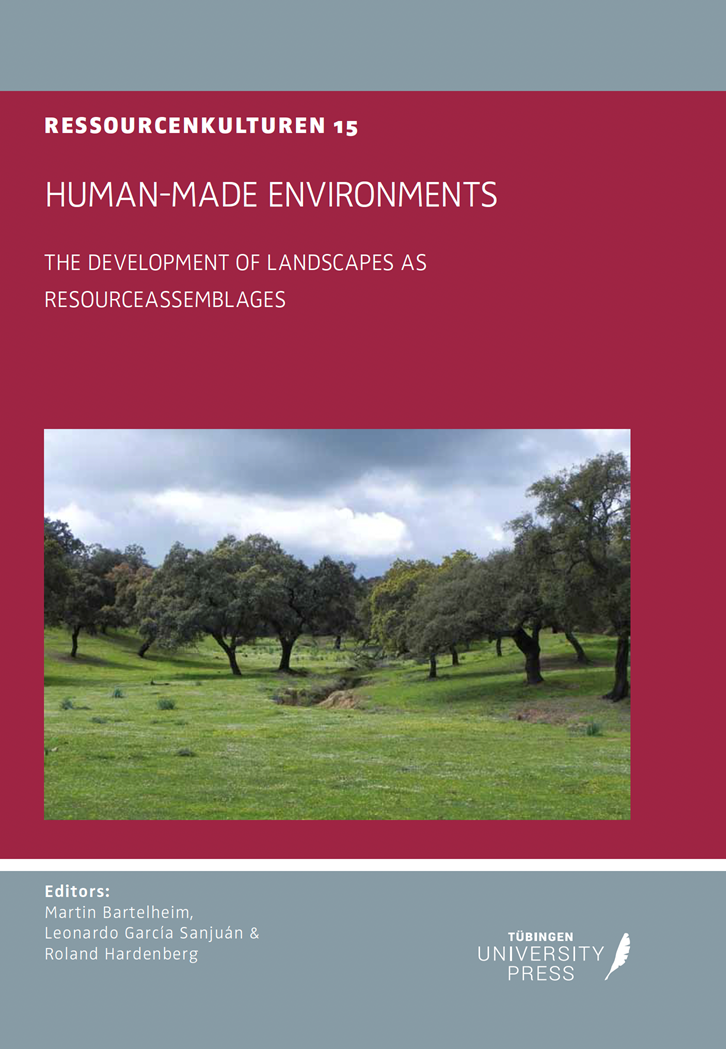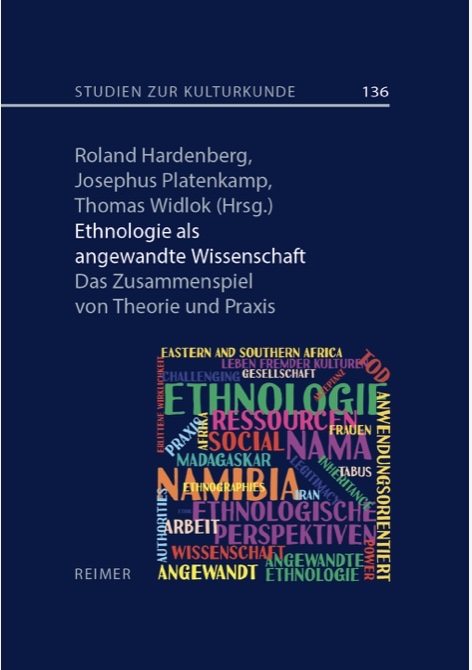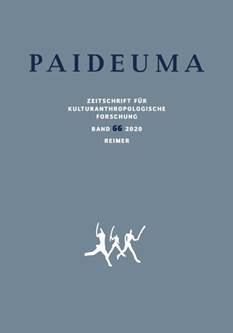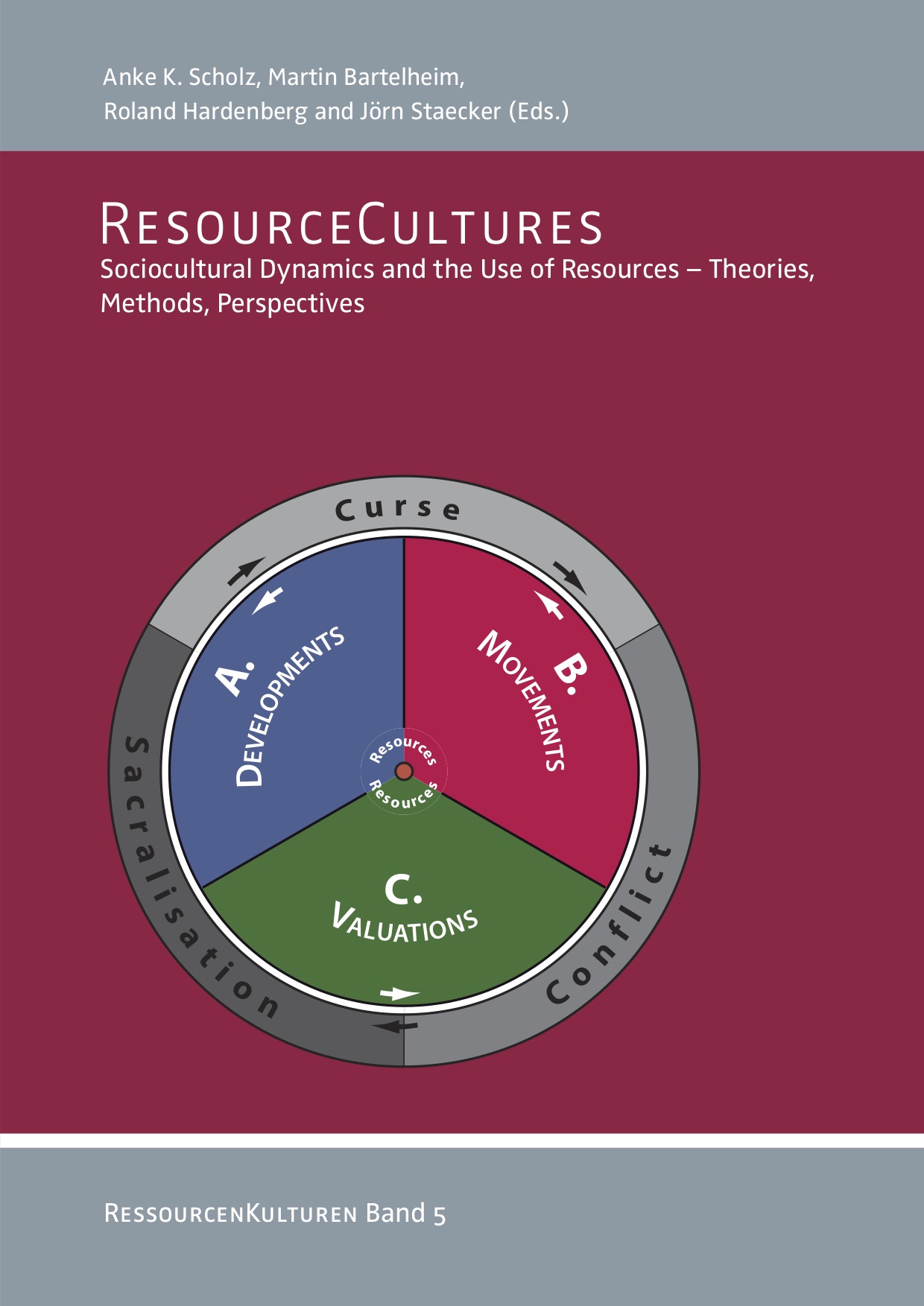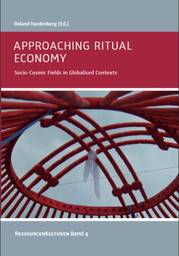Prof. Dr. Roland Hardenberg
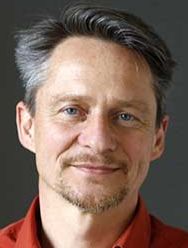
Phone: +49 69/798-33053
E-Mail: hardenberg(at)em.uni-frankfurt.de
Room: IG 515
Office hours: Tuesdays, 2 pm to 4 pm, please make an appointment with
Ursula Paul (069-798 33050)
| Research focus: | India, Central Asia; RessourcenKulturen, religion and materiality, economy and ritual |
| Regional: | India (Odisha), Central Asia (Kazakhstan, Kyrgyzstan, Tajikistan), Iran (Khorasan) and Europe (Spain). |
| Thematic: | Resource cultures, religious dynamics, religious (de-) toxification, anthropology of plants, rituals, value systems, kinship, material culture |
Roland Hardenberg addresses contemporary socio-cultural processes in Asia and Europe from an ethnological perspective. He pays particular attention to religious institutions and practices through which actors shape and change the world in the context of competing normative orders. In his research he strives for interdisciplinary collaboration, currently especially with archaeologists, historians, philosophers, theologians and natural scientists.
His current research projects deal, for example, with the perception of landscapes in Spain (DFG, SFB 1070 A02), with religious speeches in South and Central Asia (DFG, SFB 1070 C04) and with cultural resources in Iran (DAAD University Dialogues with the Islamic World). Roland Hardenberg is director of the Frobenius Institute for Cultural Anthropological Research since Jan. 1, 2017, which aims to generate new knowledge through empirical research, value material culture, and strengthen dialogue with the public and research partners.
› Frobenius Institut
› SFB 1070 RessourcenKulturen
Books and edited volumes
Gutes Arbeiten im digitalen Zeitalter (2021)

Children of the Earth Goddess: Society, Marriage, and Sacrifice in the Highlands of Odisha (2018)
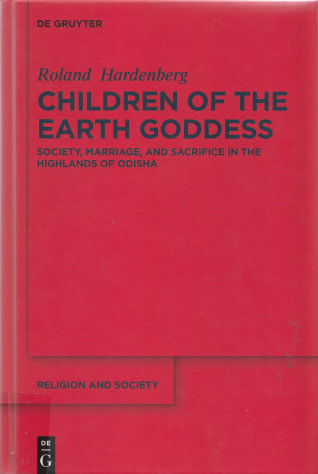
Full list of publications
Monographien
1. Hardenberg, Roland (2018). Children of the
Earth Goddess: Society, Marriage, and
Sacrifice in the Highlands of Odisha (India). Boston/Berlin: DeGruyter, 684 pages, 23 figures,
glossary & appendix. 2018 (2019: Paperback
Edition).
2. Hardenberg, Roland (2011). The Renewal of Jagannatha's Body. Ritual and Society
in Coastal Orissa. [Überarbeitete, englische Übersetzung von R.
Hardenberg, 1999, Die Wiedergeburt
der Götter] New Delhi: Manak
Publications, 428 pages, 51 figures, glossary + appendix. 2011.
3. Hardenberg, Roland (2008). König
ohne Reich: Rituale des Königtums in Orissa
(Indien). Berlin: Schiler Verlag, 289 Seiten, Fotos, Glossar +
Appendix. [2. vollständig überarbeitete
Auflage von R. Hardenberg, 2000, Ideologie eines Hindu- Königtums]. 2008.
4. Hardenberg, Roland (2000). Ideologie eines Hindu-Königtums. Struktur
und Bedeutung der Rituale des ‚Königs
von Puri' (Orissa/Indien). (Indus Bd. 7) Berlin:
Das Arabische Buch, 232 Seiten. 2000.
5. Hardenberg, Roland (1999). Die
Wiedergeburt der Götter. Ritual und Gesellschaft in Orissa. (Herodot -
Wissenschaftliche Schriften zur Ethnologie,
Bd. 1) Hamburg: Kovac Verlag, 459
Seiten, Glossar + Appendix.
1999.
Zeitschriften und Reihen
(Herausgeber)
6. Hardenberg, Roland/Jebens, Holger (eds.) (2017-2022). Paideuma: Zeitschrift für kulturanthropologische
Forschung / Journal of Cultural Anthropology.
Reimer Verlag (vor 2018: Kohlhammer
Verlag). Jährliches
Erscheinen.
7.
Hardenberg, Roland/Jebens, Holger/Kuba, Richard/Thubauville,
Sophia (Hrsg.). Studien zur Kulturkunde.
Berlin: Reimer Verlag (gegründet von Leo Frobenius, vorher Rüdiger Köppe Verlag und
Franz Steiner Verlag).
Sammelbände
(Herausgeber)
8. Conrad, Ruth; Hardenberg, Roland; Miethner, Hanna;
Stille Max (eds.) (2024). Ritual
and Social Dynamics in
Christian and Islamic Preaching. New York.
9. Hardenberg, Roland/ Platenkamp, Josephus/ Widlok, Thomas (Hrsg.) (2022). Ethnologie als angewandte
Wissenschaft. Das
Zusammenspiel von Theorie und Praxis. Berlin: Reimer Verlag. 2022.
10. Bartelheim, Martin/Contreras Cortés, Francisco/Hardenberg, Roland (eds.) (2022). Landscapes and Resources in the Bronze Age of Southern Spain. RessourcenKulturen 17. Tübingen: Tübingen University Press. 2022.
11. Schnell,
Christiane/Pfeiffer, Sabine/Hardenberg, Roland (Hrsg.) (2021). Gutes
Arbeiten im digitalen Zeitalter. Frankfurt a. Main: Campus Verlag. 2021.
12. Bartelheim,
Martin/García Sanjuán, Leonardo/Hardenberg, Roland (eds.) (2021).
Human-Made Environments – The Development of
Landscapes as Resource Assemblages. RessourcenKulturen 15.
Tübingen: Tübingen University Press.
13. Scholz, Anke K/Bartelheim,
Martin/Hardenberg, Roland/ Staecker, Jörn (eds.) (2017). ResourceCultures.
Sociocultural Dynamics and the Use of
Resources – Theories, Methods,
Perspectives. SFB Publications:
Tübingen.
2017.
14. Hardenberg, Roland (ed.) (2017). Approaching
Ritual Economy: Socio-Cosmic Fields in Globalized
Contexts. Tübingen: SFB 1070
Publications. 2017.
15. Berger,
Peter/ Hardenberg, Roland/ Kattner, Ellen/ Prager, Michael (eds.) (2010).
An Anthropology of Values. Essays in honour of
Georg Pfeffer. New Delhi:
Pearson/Longman. 2010.
16. Hardenberg, Roland (ed.) (2000). Asian World
Views. Context and Structure.
Journal of Social Sciences (special edition), 4/4, Delhi: Kamla Raj. 2000.
Wörterbücher
17. Hardenberg, Roland/ Panda, Shankar K. (1999). Oriya-German-English.
Basic Vocabulary. (Mahanadi-Beiträge zur Südasienforschung, hg. v. G.
Pfeffer, Serie A: Sprachen) Berlin: Institut für Ethnologie der
Freien Universität Berlin. 1999.
Artikel in Zeitschriften
18. Teuber, S. /M.
Bartelheim/R. Hardenberg/M. Knopf/T. Knopf/P. Kühn/T.
Schade/K.
Schmidt/T. Scholten 2022. Why do we need
Interdisciplinary Cooperation with
Anthropologists and Archaeologists in Soil Science? Journal of Plant
Nutrition and Soil Science, 185, 2022,
752–765. DOI: https://doi.org/10.1002/jpln.202200120
19. Hardenberg, Roland (2021). Nabakalebara. Nandigosha (Special Edition Pratistha) 14: 32-33.
20. Berger, Peter/Hardenberg,
Roland (2021). Obituary: Georg Pfeffer (17 January 1943 – 20 May 2020).
Contributions to Indian Sociology
55/1: 129-133.
21. Hardenberg, Roland/Berger, Peter (2020). Georg Pfeffer (1943-2020). Paideuma:
Zeitschrift für kulturanthropologische
Forschung / Journal of Cultural Anthropology 65, 2020:
331-345.
22. Conrad,
Ruth/Hardenberg, Roland (2020). Religious Speech as Resource.
International Journal of Practical Theology 24(1), 2020: 165-195.
23. Berger,
Peter/Hardenberg, Roland (2018). Cereal Belongings – a cultural perspective on cereals as resource.
Paideuma: Zeitschrift für kulturanthropologische Forschung / Journal of Cultural Anthropology 64: 2018: 167-181.
24. Hardenberg, Roland (2018). 'Imperial rice'
and ‚subaltern millets'. Cereals as resources in Odisha (India) and
beyond. Paideuma: Zeitschrift
für kulturanthropologische Forschung /
Journal of Cultural Anthropology 64: 2018:
265- 283.
25. Hardenberg, Roland (2017). From Durkheim to
Hocart: Sacred Resources and the
Quest for 'life'. Durkheimian Studies / Etudes Durkheimiennes 23,
2017: 40-56.
26. Hardenberg, Roland (2016). Beyond Economy and
Religion. Resources and Socio-cosmic Fields
in Odisha, India. Religion and Society: Advances
in Research 7, 2016: 83-96.
27. Hardenberg, Roland (2012). Collective, communicative and cultural memories: examples of local historiography from northern Kyrgyzstan. Central Asian Survey (Special issue: Local History as an Identity Discipline) 3/31, 2012: 265-276.
28. Hardenberg,
Roland
(2012). Die kulturelle Gestaltung des Todes in nicht-westlichen
Gesellschaften. Berliner Theologische
Zeitschrift (Bestattungskultur in der
Gegenwart) 2/2012, 2012:
335-359.
29. Hardenberg, Roland (2010). The Efficacy of
Funeral Rituals in Kyrgyzstan. Journal
of Ritual Studies 24/1,
2010: 29-43.
30. Hardenberg, Roland (2009). Reconsidering
‚tribe', ‚clan' and ‚relatedness': A
comparison of social categorization in Central and South Asia. Scrutiny:
A Journal of International and Pakistan
Studies 1/ 1, 2009: 37-62.
31. Hardenberg, Roland (2009). Categories of Relatedness: Rituals as a Form of Classification in a Middle Indian Society. Contributions to Indian Sociology 43/1, 2009: 61-87.
32. Hardenberg,
Roland (2008). Die Moso (China)
im interkulturellen Vergleich. Grenzen und Möglichkeiten des
komparativen
Ansatzes in der Ethnologie. Paideuma
54, 2008: 109-127.
33. Hardenberg, Roland (2007). Das „einschließende Haus“:
Wertehierarchien und das Konzept der „Hausgesellschaft“ im interkulturellen
Vergleich. Anthropos 102, 2007: 157-168.
34. Hardenberg,
Roland (2005). Ethnologische
Feldforschung im entlegenen Gebiet:
Ein Beitrag zur Bedeutung der
ethnographischen Erfahrung. Mitteilungen der Berliner Gesellschaft für Anthropologie,
Ethnologie und Urgeschichte 26,
2005: 71- 82.
35. Hardenberg, Roland (2005). Mädchenhäuser, Schöpfung und Empfängnis: Kulturelle Konstruktion der Geschlechter bei den Dongria Kond (Orissa/Indien). Zeitschrift für Ethnologie 130, 2005: 69-98.
36. Hardenberg,
Roland (2004). Vitalität und
Tausch: Heirat und Opfer bei den Dongria
Kond (Orissa, Indien). Mitteilungen der
Berliner Gesellschaft für Anthropologie,
Ethnologie und Urgeschichte 25, 2004: 31-46.
37. Hardenberg, Roland (2003). Friendship and
Violence among the Dongria Kond (Orissa/India).
Baessler Archiv 51,
2003: 45-57.
38. Hardenberg,
Roland (2000). Introduction: Asian World Views: Context and Structure.
Journal of Social Sciences 4/4: 2000:
227-233.
39. Hardenberg, Roland (2000). Visnu's sleep,
Mahisa's attack, Durga's victory.
Concepts of royalty in a sacrificial drama. Journal of Social
Sciences 4/4, 2000: 261- 276.
40. Hardenberg, Roland (2000). The Anka Ceremony
of the King of Puri. Journal of Social Sciences
4/2-3,
2000: 183-93.
41. Hardenberg, Roland (1998). Ritual
Representation of Political Change: The Case of
the Puri-King. Journal of the Indian Anthropological Society 33/1, 1998: 87-104.
Artikel in Sammelbänden und Enzyklopädien
42. Conrad, Ruth; Hardenberg,
Roland; Miethner, Hanna; Stille Max (2024).
Introduction. Topic, Contribution, and
Perspectives for Future Research.
In: Conrad, Ruth; Hardenberg, Roland; Miethner, Hanna; Stille Max
(eds.),
Ritual ~ and Social Dynamics in
Christian and Islamic Preaching. New
York. 2024: 1-18.
43. Hardenberg,
Roland/
Platenkamp, Thomas/ Widlok, Thomas (2022): Einleitung. In: Hardenberg, Roland/
Platenkamp, Josephus/
Widlok, Thomas (Hrsg.), Ethnologie alsangewandte Wissenschaft. Das Zusammenspiel
von Theorie und Praxis.
Berlin: Reimer Verlag. 2022: 7-26.
44. Hardenberg, Roland (2022): Bauxitabbau, Megalithen und Holzpfähle. Das Verstehen sozio-kosmischer Ordnungen in einem Konflikt um ‚Ressourcen'. In: Hardenberg, Roland/ Platenkamp, Josephus/ Widlok, Thomas (Hrsg.) (2022). Ethnologie als angewandte Wissenschaft. Das Zusammenspiel von Theorie und Praxis. Berlin: Reimer Verlag. 2022: 61-87.
45. Bartelheim, Martin/ Chala Aldana, Dobereiner/Díaz-Zorita Bonilla, Marta/ Hardenberg, Roland/Melles, Maike (2022): Landscape Use and Transhumance in Sierra Morena through the Ages. In: M. Bartelheim/F. Contreras Cortés/R. Hardenberg (eds.), Landscapes and Resources in the Bronze Age of Southern Spain. RessourcenKulturen 17 (Tübingen: Tübingen University Press) 2022: 109-134.
46. Bartelheim, Martin/García Sanjuán, Leonardo/Hardenberg, Roland (2021): Human- Made Environments. The Development of Landscapes as Resource Assemblages. An Introduction. In: M. Bartelheim/L. García Sanjuán/R. Hardenberg (Hrsg.), Human-Made Environments – The Development of Landscapes as Resource Assemblages. RessourcenKulturen 15 (Tübingen: Tübingen University Press) 2021: 7-23.
47. Hardenberg, Roland (2021). Dwelling in an Animated Landscape. Forms of Attachment between Environment and People in Eastern India. In: M. Bartelheim/L. García Sanjuán/R. Hardenberg (eds.), Human-Made Environments – The Development of Landscapes as Resource Assemblages. RessourcenKulturen15. (Tübingen: Tübingen University Press) 2021: 23-34.
48. Hardenberg, Roland (2021). Arbeit als Daseinsgestaltung. Ethnologische Perspektiven auf Mensch-Ding-Beziehungen und soziokosmische Felder. In: Schnell, Christiane/Pfeiffer, Sabine/Hardenberg, Roland (Hrsg.), Gutes Arbeiten im digitalen Zeitalter (Frankfurt a. Main: Campus Verlag) 2021: 45-64.
49. Hardenberg, Roland (2021). The Rise of a New
Millet Assemblage. In: T. Schade/B. Schweizer/S. Teuber/R. Da
Vela/W. Frauen/M.
Karami/D. Kumar Ojha/K. Schmidt/R. Sieler/M. Toplak (Hrsg.), Exploring Resources. On
Cultural, Spatial and Temporal
Dimensions of ResourceCultures. RessourcenKulturen
13 (Tübingen: Tübingen
University
Press) 2021: 141-156.
50. Bartelheim, Martin/Hardenberg, Roland/Scholten, Thomas (2021). Ressourcen – RessourcenKomplexe – RessourcenGefüge – RessourcenKulturen. In: T. Schade/B. Schweizer/S. Teuber/R. Da Vela/W. Frauen/M. Karami/D. Kumar Ojha/K. Schmidt/R. Sieler/M. Toplak (Hrsg.), Exploring Resources. On Cultural, Spatial and Temporal Dimensions of ResourceCultures. RessourcenKulturen 13 (Tübingen: Tübingen University Press) 2021: 9-22.
51. Hardenberg,
Roland
(2020). Die Genealogische Methode. Eine kritische Einführung
und Anleitung, in: B. Beer/A. König (eds.), Methoden
ethnologischer Feldforschung. Berlin: Reimer Verlag. 2020: 159-178.
52. Hardenberg, Roland (2019). Dongria Kond: Fact Sheet, in: Brill's Encyclopedia of the Religions of the Indigenous People of South Asia Online, Marine Carrin (Editor- in-Chief), Michel Boivin, Gérard Toffin, Paul Hockings, Raphaël Rousseleau, Tanka Subba, Harald Lambs-Tyche (Section Editors). <http://dx.doi.org/10.1163/2665- 9093_BERO_COM_032152>
53. Hardenberg, Roland (2019) Dongria Kond: Perspectivism in Tribal India, in: Brill's Encyclopedia of the Religions of the Indigenous People of South Asia Online, Marine Carrin (Editor-in-Chief), Michel Boivin, Gérard Toffin, Paul Hockings, Raphaël Rousseleau, Tanka Subba, Harald Lambs-Tyche (Section Editors). <http://dx.doi.org/10.1163/2665-9093_BERO_COM_031977>
54. Hardenberg,
Roland (2019). Vorwort, in:
Museum Giersch der Goethe-Universität,
Frobenius-Institut (Hrsg.), Frobenius –
Die Kunst des Forschens (Ausstellungskatalog).
Petersberg: Imhoff Verlag 2019: 10–11.
55. Hardenberg, Roland (2019). Agnes Susanne Schulz, in: Museum Giersch der Goethe-Universität, Frobenius-Institut (Hrsg.), Frobenius – Die Kunst des Forschens (Ausstellungskatalog). Petersberg: Imhoff Verlag 2019: 233–239.
56. Hardenberg,
Roland (2018). Sacrifice, in: International Encyclopedia of Anthropology,
ed. H.
Callan, Vol. 12 (ed. By Simon Coleman). Wiley-Blackwell.
doi:10.1002/9781118924396.wbiea2258 2018.
57. Hardenberg, Roland (2017). 'Juniors', 'Exploiters', 'Brokers' and 'Shamans'— a Holistic View on the Dombo Community in the Highlands of Odisha, in: U. Skoda/B.Pati (eds.) Highland Odisha. Life and Society beyond the Coastal World. Delhi: Primus Books. 2017: 135-174.
58. Bartelheim, Martin/Hardenberg, Roland/ Staecker, Joern (2017). The ‚Resource Turn': A Socio-Cultural Perspective on Resources, in: A. K. Scholz, M. Bartelheim, R. Hardenberg and Jörn Staecker (eds.), ResourceCultures. Sociocultural Dynamics and the Use of Resources – Theories, Methods, Perspectives. SFB Publications: Tübingen. 2017: 13-24.
59. Hardenberg, Roland (2017). Dynamic
Correspondences: ResourceCultures. In: A. K.
Scholz, M. Bartelheim, R. ~
Hardenberg and Jörn Staecker (eds.), ResourceCultures.Sociocultural Dynamics and the Use of Resources
–
Theories, Methods, Perspectives. SFB Publications: Tübingen. 2017: 25-34.
60. Fehlings,
Susanne/ Hardenberg, Roland (2016). Informality Reviewed: Everyday
Experiences and the Study of Transformational Processes in Central
Asia and the Caucasus. Working Paper
Series on Informal Markets and Trade, No. 2. 2016. (urn:nbn:de:hebis:30:3-415178)
61. Hardenberg, Roland (2016). Introduction: The
Study of Socio-Cosmic Fields, in: R.
Hardenberg (ed.), Approaching Ritual Economy: Socio-Cosmic
Fields in Globalized Contexts. Tübingen: CRC 1070 Publications. 2016:
7-36.
62. Bartelheim, Martin/Hardenberg, Roland/
Scholz, Anke K. (2016). Arm und Reich?
Alternative Perspektiven auf Ressourcen und ihre Nutzung, in: H.
Meller/R. Risch/R. Jung/H.-P. Hahn
(Hrsg.), Arm und Reich - Zur Ressourcenverteilung in prähistorischen Gesellschaften 8.
Mitteldeutscher Archäologentag vom Oktober 2015 in Halle (Saale). Tagungen des Landesmuseums für Vorgeschichte Halle 14.
2016: 85-100.
63. Hardenberg, Roland (2016). 'Those who spread from one father': The Cultural Elaboration of Segmentation and Inclusion in Kïrgïzstan, in: L. Prager/M. Prager/G. Sprenger (eds.), Parts and Wholes. Essays on Social Morphology, Cosmology, and Exchange in Honour of J. D. M. Platenkamp. Zürich: Lit Verlag. 2016: 105-124.
64. Bartelheim, Martin/Hardenberg,
Roland/ Scholz, Anke K./Staecker, Joern (2015).
'ResourceCultures' - A concept for investigating the use of
resources in different societies, in: A.
Danielisová/M. Fernández-Götz/K. Kowarik (eds.), Persistent economic ways of living - Production,
distribution, and consumption in Iron Age and
Early Medieval period. Budapest: Archaeolingua. 2015: 33–43.
65. Hardenberg, Roland (2015). Three Dimensions of Liminality in the context of Kyrgyz Death Rituals, in: P. Berger/J. Kroesen (eds.), Ultimate Ambiguities Investigating Death and Liminality. New York & Oxord: Berghahn Books. 2015: 125-146.
66. Hardenberg, Roland (2014). Bali Yatra of the
Kond: A Ritual Performance and its
socio-historical context, in: T. Otten/U. Skoda (eds.), Dialogues
with Gods: Possession in Middle Indian
Rituals. 2014. Indo-European Studies in Politics and Society (edited by Klaus Voll and Uwe Skoda),
Bd. 6. Berlin: Weissensee Verlag. 2014:
135-174.
67. Hardenberg, Roland (2013). Nabakalebar: The
Renewal of Jagannatha's Body. In:
H. Kulke (ed.), Imaging Odisha (Vol. 1). Jagatsinghpur:
Prafulla. 2013: 270-271.
68. Hardenberg, Roland (2012). Kyrgyz Funerals
and Memorials from an ethnological
perspective. In: P.
Pfälzner/H. Niehr/E. Pernicka/A. Wissing (eds.), (Re-) Construct- ing
Funerary Rituals in the Ancient Near East. Wiesbaden: Harassowitz. 2012: 301- 308.
69. Berger, Peter/Hardenberg, Roland/Kattner, Ellen (2010). Introduction. In: P. Berger/R. Hardenberg/E. Kattner/M. Prager (eds.), An Anthropology of Values. Essays in honour of Georg Pfeffer. New Delhi: Pearson/Longman. 2010: xv-xxxiii.
70. Berger, Peter/Hardenberg, Roland (2010). A conversation with Georg Pfeffer, in: P.
Berger/R. Hardenberg/E. Kattner/M. Prager (eds.), An
Anthropology of Values. Essays in honour
of Georg Pfeffer. New Delhi: Pearson/Longman. 2010: xxxix-liv.
71. Hardenberg, Roland (2010). A reconsideration
of Hinduization and the caste-tribe
continuum model. In: P. Berger/R. Hardenberg/E. Kattner/M. Prager
(eds.), An An- thropology
of Values. Essays in honour of Georg Pfeffer.
New Delhi: Pear- son/Longman. 2010: 89-103.
72. Hardenberg, Roland (2009). Geheim, verboten, unrein – Beschreibung
einer Feldforschungssituation in Puri
(Orissa), in: P. Berger/J. Berrenberg/B. Fuhrmann/J. Seebode/C. Strümpell (Hrsg.), Feldforschung
– Ethnologische Zugänge zu sozialen
Wirklichkeiten. Berlin: Weißensee Verlag. 2009: 339-368.
73. Hardenberg, Roland (2009). Gabentauschtheorie und Bestattungen: Eine ethnologische Forschung in Kyrgyzstan, in: P.
Kadyrbekova (Hg.), Interkulturelle wissenschaftliche Kommunikation: Probleme und
Perspektiven. Bishkek:
Bilim. 2009: 24-29.
74. Hardenberg, Roland (2009). 'Village Relations': Exchange and Territory in the Highlands of Orissa, in: G. Pfeffer (ed.), Tribal Society: Category and Ritual Exchange (Contemporary Society: Tribal Studies Vol. 8). New Delhi: Concept. 2009: 135-158.
75. Hardenberg, Roland (2009). The Buffalo
Sacrifice of the Kond and the Creation of
Society. In: G. Pfeffer (ed.), Tribal Society: Category and
Ritual Exchange (Contemporary Society:
Tribal Studies Vol. 8). New Delhi: Concept. 2009: 52-66.
76. Hardenberg, Roland (2008). Sacrificing in
Highland Orissa: Self-Reproduction and
Dependency, in: E. Stavrianopoulou/A. Michaels/C. Ambos (eds.), Transformations
in Sacrificial Practices. From Antiquity to Modern Times (Proceedings of an
International Colloquium, 10-12 July 2007). Heidelberg: LIT Verlag -
Reihe: Performances: Intercultural
Studies on Ritual, Play and Theatre). 2008:
113-134.
77. Hardenberg,
Roland (2008). Die Genealogische
Methode. Eine kritische Einführung, in: B. Beer (Hg.),
Methoden und Techniken
der Feldforschung (2. Aufl.). Berlin: Reimer Verlag. 2008: 83-102.
78. Hardenberg,
Roland (2007). Context and Values. A discussion of concepts, in: G.
Pfeffer (ed.), Periphery and Centre: Studies in Orissan
History, Religion and in Anthropology
(Vol. 7). Delhi: Manohar Press. 2006: 153-172.
79. Hardenberg, Roland (2006). 'Hut of the Young Girls': Transition from
Childhood to
Adolescence in a middle Indian tribal society, in: D. K. Behera
(ed.), Childhoods in South Asia.
Singapore: Pearson Education. 2006: 65-81.
80. Hardenberg, Roland (2000). The Renewal of Jagannatha, in: B. Schnepel/H. Kulke (eds.), Jagannatha Revisited. Studying Society, Religion and the State in Orissa. Delhi: Manohar. 2000: 65-92.
Rezensionen
81. Hardenberg,
Roland (2004). Carsten, J. After
Kinship. Cambridge: Cambridge University Press,
2004. In: Social Anthropology 14/2, 2006:
277-278.
82. Hardenberg,
Roland (2002). Mihir K.
Jena/Padmini Pathi/Jagannath Dash/Kamala
K. Patnaik/Klaus Seeland.
Forest Tribes of Orissa. Lifestyle and Social Conditions of Selected Orissan Tribes. Vol. 1 The Dongaria
Kondh. (Man and Forest Series 2) New
Delhi: D. K. Printworld, 2002. In: Internationales Asienforum
3-4. 2002: 379-381.
83. Hardenberg, Roland (1999). Schnepel, B. Twinned Beings. Kings and Effigies in Southern Sudan, East India and Renaissance France. Göteborg University, Schweden, 1995. In: Zeitschrift für Ethnologie 124, 1999: 173-175.
84. Hardenberg,
Roland (1997). Berkemer, G.
Little Kingdoms in Kalinga.
Legitimation und Politik regionaler Eliten [Little Kingdoms in Kalinga. The Politics of legitimating regional elites]. Heidelberg, 1993. In: Orientalische Literaturzeitung 92,1, 1997: 154-157.
Filme
85. Hardenberg, Roland (2003). Die tanzenden Götter. Die Verehrung des Gottes Niamraja. Länge: 9.54 Min. (MPEG2-Format). Berlin: Ethnologisches Museum. 2003.
Regional areas of South and Central Asia and the Caucasus
1. South Asia
Being part of the Asian continent, South Asia is variously defined. Geographically, South Asia consists of the plain bordered by the Indus, Ganges and Brahmaputra and the adjoining Indian peninsula, and is separated by the Hindu Kush in the northwest, the Karakoram mountain range in the north and the Himalayas in the northeast. In the south, the Indian subcontinent is surrounded by the Indian Ocean. According to the UN definition, which is based on national borders, South Asia includes India, Pakistan, Bangladesh, Sri Lanka, Nepal, Afghanistan, Bhutan and the Maldives. In terms of population, production of goods, gross national product and economic growth, India accounts for a larger share than all of the other neighbouring countries combined.
About 25 per cent of the world's population lives in South Asia. Two thirds of them live in India, which occupies 72 per cent of the total area of South Asia. These South Asian countries have much in common, which is an expression of the socio-cultural and religious dynamics that have shaped the entire region over the centuries in the context of the rise and fall of various empires. However, there are also great local differences in South Asia, both in terms of the linguistic groups (Indo-Iranian, Dravidian, Tibeto-Burman and Munda), with a total of around 650 languages, and in terms of religious diversity. While Hindus are the majority in India and Nepal, Muslims are the majority in Pakistan, Bangladesh and the Maldives, and the population of Bhutan and Sri Lanka is predominantly Buddhist. These three religions, which are strongly differentiated internally in terms of ideas and practices, go hand in hand with complex social orders. They influence the organisation of everyday life and may trigger communal conflicts in the respective regions. Other religious groups that form part of South Asia are the Sikhs, Jains, Parsees, Thomas Christians and Ahmadiyya, as well as the various tribal societies (Adivasi) of the subcontinent with their diverse religious practices. This diversity provides many interesting areas of research for social and cultural anthropologists, which should ideally be explored in intensive ethnographic field research. South Asia's diversity is also linked to an equally wide range of academic discourses in South Asian anthropology.
Our research activities and cooperations with universities in the east (especially Odisha) and west (Gujarat and Maharashtra) of India characterise the special research profile of the Department of Social and Cultural Anthropology in Frankfurt. Thus, our profile complements the focal points of South Asia at other institutes in Germany. In our focus regions, students can find much common ground for their own research projects.
University of Mumbai (Maharashtra), India
Utkal University (Bhubaneswar, Odisha), India
University of Sambalpur (Sambalpur, Odisha), India
For further questions please contact Dr. Andrea Luithle-Hardenberg
2. Central Asia
Central Asia is a geographically and culturally diverse region stretching from west to east from the Caspian Sea to China and Mongolia, and from north to south from Russia to Afghanistan and Iran. The entire region is topologically diverse and includes high mountain ranges such as the Tian Shan, grassy steppes, deserts, as well as subtropical and semi-arid regions.
Historically, Central Asia is associated with pastoral nomads who have developed special forms of adaptation to their environment. Some of these social and cultural characteristics of the nomadic way of life remain relevant today or have adapted over time to changing conditions.
Traditionally, Central Asia is identified with the region through which the routes of the so-called "Great Silk Road" once ran. It connected Asia and Europe and enabled exchanges of different cultures. From a political perspective, the term Central Asia refers primarily to the five post-Soviet republics of Kazakhstan, Kyrgyzstan, Tajikistan, Turkmenistan and Uzbekistan. For most of the 20th century, this part of Central Asia was ruled and governed first by the Russian Empire and then by the Soviet Union. The collapse of the Soviet Union in the 1990s led to a sudden transition from a planned economy to a market economy. This so-called transformation period had profound socio-economic and cultural consequences. At the same time, the revival of values defined as “traditional" and the return to Islam in the region have resulted in a unique combination of ethnographic characteristics that offer a broad spectrum for social and cultural anthropological research.
From an anthropological point of view, we are particularly interested in local expressions of social and political formations, variations of everyday Islam, the role of “ethnic" classifications in political communities, various pastoral and agricultural economic practices, as well as nomadic and sedentary lifestyles. So far, research has been carried out on topics such as: mobile lifestyle, human-nature relationships, yurts and material culture, holy places, land and water resources, kinship, the role of tribal orders in socio-political life, life-cycle rituals and celebrations, the revival of Islam, the role of women and children, traditional medicine, labor migration and much more.
We have been working with partner universities in Central Asia (see below) for a long time. Students have the opportunity to visit these institutions as part of exchange programs and be supervised for short-term field research.
American University of Central Asia, Kyrgyzstan
International University of Central Asia, Kyrgyzstan
Deutsch-Kasachische Universität, Kazakhstan
Ferdowsi University of Mashhad, Iran
The University of Isfahan, Iran
For further questions please contact Dr. Baktygul Shabdan
3. The Caucasus
Politically, the Caucasus comprises parts of the Russian Federation in the north and the independent post-Soviet republics of Armenia, Azerbaijan and Georgia (South Caucasus) in the south. Geographically, this area is situated between the Black and Caspian Seas. It is characterised by coastal zones and mountain ranges and includes arid deserts and steppes, as well as temperate-continental and subtropical-humid areas. The population is heterogeneous. In addition to the so-called "titular nations", ethnic groups from whose ethnonym the names of the nation-states are derived – Armenians, Azeri and Georgians, one also finds other ethnic and religious minorities such as Juhuro ("mountain Jews"), Molokans, Yazidis, Assyrians, and Kurds. On the one hand, from an internal and external perspective, the Caucasus is imagined as a connecting link between East and West, Asia and Europe and Orient and Occident. On the other hand, as reflected in the writings of Russian and European authors of the 19th century, this area is considered isolated and dangerous. In these novels, one can find romantic descriptions of "wild" mountain peoples and their concepts of honour. Despite all the exaggerations, both ideas are rather justified.
Historically, trade routes and migratory flows connected with the ancient Silk Road ran through the Caucasus. To this day, the Caucasus is a transit zone and brings together a wide variety of people and worldviews. At the same time, the region has been and is ravaged by conflicts and wars that can be traced back throughout history to changing power relations. Such conflicts continue to threaten social, political and economic security today and shape external contacts. Globally powerful nations such as the USA, Russia, Iran and Turkey, and more recently China, are interested in the natural resources of the Caspian Sea and in the geostrategic location of the Caucasus. At the same time, they consider the region as a periphery that appears foreign to some extent in terms of its cultural values and constellations.
The eventful history of the Caucasus, the ethnic and religious diversity, as well as the social, legal, political, economic and linguistic characteristics make the Caucasus a very interesting area of research for social and cultural anthropologists. However, despite favourable research conditions and support by local researchers and institutions, the Caucasus region remains underrepresented in the anthropological scholarship.
The projects carried out by our researchers, doctoral students and local students in the Caucasus cover a wide range of topics. They range from urban anthropology and local economics to religious identities and reproductive technologies. In addition to research contacts, our institute also cooperates with local universities that provide student exchange and support for student research projects.
Yerevan State University, Armenia
Ivane Javakhishvili Tbilisi State University, Georgia
For further questions please contact PD Dr. Susanne Fehlings
- Studying at Goethe University
- International applicants
- Faculties
- Overview of study programmes
- Programme for refugees
- GRADE
- Goethe Business School (continuing education)
- Research at Goethe University
- Scientific news
- Goethe Welcome Center (for international researchers)
- Collaborative research projects
- Individual research
- Visiting fellowships
- Endowed chairs
- About the University
- News-in-brief
- University administration
- Campus locations
- Campus life
- University archives (German)
- Rhine-Main-Universities
